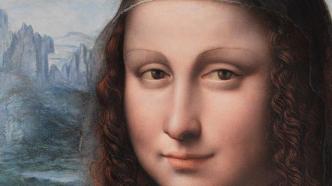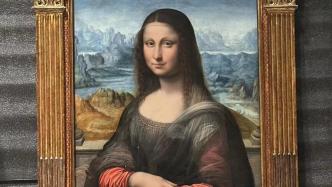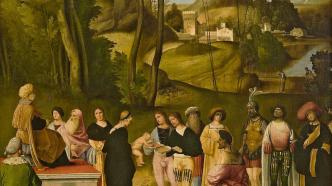
"Titian Flora - Uffizi Gallery Venetian School Collection Exhibition" was recently exhibited at Shanghai Dongyi Art Museum. As the third major exhibition of the cooperation project between Dongyi Art Museum and Uffizi Gallery, the exhibition focuses on the Venetian School represented by the art master Titian, presenting 49 art masterpieces.
In addition to the exhibition's eponymous work, Titian's masterpiece "Flora", the exhibition also features many famous paintings worth a closer look. The Paper.cn Art Review has selected and published some of the works in the exhibition.
While painting, sculpture and architecture have made a decisive contribution to the shaping of Venice's urban landscape since the 14th century, decorative art, reflected in public and private palaces, churches and squares, reached its peak in the 16th century, when the Renaissance movement matured.
Anna Bisceglia, the exhibition curator, wrote in the article “Titian and Friends in Sixteenth-Century Venice”: “The 16th century was the golden age of Venetian art, thanks to a group of outstanding artists headed by Titian who gathered in the city. Titian, his mentor Giorgione, and later Tintoretto, Veronese, Palma the Elder and Jacopo Bassano created a series of paintings characterized by dramatic composition, full of strong colors, warm and atmospheric. They expressed the reality and society of the time in different ways, each with its own merits, and had a profound impact on European art of the same period and even on later generations.”
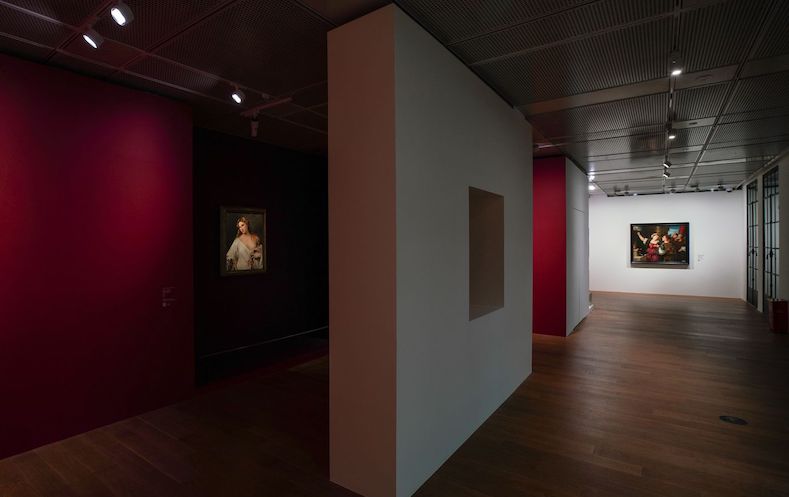
"Titian Flora - Uffizi Gallery Venetian School Collection Exhibition" is on display at Shanghai Dongyi Art Museum
"Titian broke away from the traditional Florentine way of painting. He did not use geometric perspective, nor did he sketch in advance the relationships between the figures or the details of the composition. Instead, he adopted a very unique method of working directly on the canvas. After sketching out the base with a few strokes of dark pigment, Titian began to apply layers of color, from opaque to the most transparent. It was in this way that he created the texture of his paintings. He did not create the sense of volume through sketching and chiaroscuro like Michelangelo or Leonardo da Vinci, but through the combination of color and light, that is, darkening or lightening the tones according to the direction of the light source, and reserving the deepening of some details until the final stage. This explains why the paintings of Titian and the 16th-century Venetian painters seem so vibrant and passionate, because the landscapes in the paintings seem to move in the wind and the figures breathe like real life."
Our Lady of Mercy

Titian Vecellio: Madonna of Mercy
The first painting on display not only demonstrates Titian's artistic ideas, but also declares his important social status in Venice. In the center of the picture, the Madonna, dressed in red, stands in a huge stone niche and covers the figure kneeling before her with her cloak. This image has been widely circulated in Christian tradition since the Middle Ages, symbolizing the protection of the Virgin Mary over the Church and all mankind. Titian painted his self-portrait on the lower left side of the Madonna, with his back to the viewer, wearing a black cloak and expensive gold chains that symbolize wealth. Titian also painted his family in the painting, especially his son Orazio who is next to him, and his nephew Marco who inherited his studio. Bright brushstrokes, thick smears and deep tones are the characteristics of Titian's late works. The painting was commissioned by Guidobaldo II della Rovere, Duke of Urbino, and was partly completed by assistants based on Titian's sketches.
Portrait of Tommaso Mosti

Titian Vecellio: Portrait of Tommaso Mosti
The inscription on the back of the painting reads: "1526, Tommaso Mosti, 25 years old. Painter Titian from Cadore". Scholars date the painting to around 1520, but the inscription, in 17th-century handwriting, must have been added many years after the work was completed. As for who painted the painting, it was originally purchased as a Titian by Cardinal Leopoldo de' Medici, one of the most discerning collectors of the Medici family, but it was classified as a copy in 1675, probably because of the layers of oil paint that affected its recognition. After restoration, the painting was reclassified as a work of Titian in 1909. As for the identity of the person in the painting, he is dressed elegantly and stylishly in a coat with a fur lining and detachable sleeves, and a high-collared shirt with black embroidered lace. This Cardinal Tommaso Mosti's position in the church is not appropriate - in 1526, he was serving as archbishop of Ferrara Cathedral. Therefore, some people believe that this painting actually depicts his second brother Vincenzo, or even his third brother Agostino. Regardless of who it depicts, this portrait is one of Titian's masterpieces. The character modeling is impeccable and vivid, and the brown and black tones of male clothing were considered a symbol of elegance and elite status at the time. The rapid brushstrokes portray this man vividly, even giving the character a certain color that transcends the times.
The Virgin and Child with Saint John and Saint Catherine of Alexandria

Titian and his studio: The Virgin and Child with Saint John and Saint Catherine of Alexandria
From the beginning of his career, Titian had been commissioned to paint small Madonna and Child paintings set in landscapes for private devotions in the home. Unconstrained by the conventions of public altarpieces in the church, these paintings allowed Titian to explore different means of expression, integrating the Madonna and Child with the natural environment in more creative and meaningful ways. This work is his most in-depth exploration of the subject. The subject first appears in a work Titian created in the 1530s, and he had difficulty framing the figures, and over the next decade he worked with assistants to revise and paint several versions of the subject, one of which was this. The identity of the woman holding Jesus in the painting has long been debated, but she is most likely Saint Catherine of Alexandria, a saint depicted many times during the Renaissance.
Venus, Cupid, Dog and Partridge

Titian and his studio: Venus, Cupid, Dog and Partridge
Titian depicted naked Venus many times during his long career. In the 1530s, he achieved great success with the Venus of Urbino, which inspired various derivative works. The painting has been praised for a long time. Twenty years later, Titian followed up with a new reclining Venus - this time with a landscape as the background. Titian's innovative composition became very popular and he received many orders for copies. Several versions of these copies exist, including this one. There are slight differences between the versions: originally, there was an organist accompanying Venus at the foot of the bed, and Titian later added a lute player. In this version, Titian did not depict the musicians, but filled the empty space with a dog. Cupid placed his arrows at the foot of the bed - something that was not in the original. Titian seemed to make these changes to the work to satisfy his unstoppable desire to create.
Venus, Cupid and Vulcan

Jacopo Robusti, also known as Tintoretto, Venus, Cupid and Vulcan
As a fledgling painter in Venice in the 1530s and 1540s, Tintoretto was deeply influenced by Titian’s work, such as this one, which was inspired by Titian’s enchanting portrait of Venus. Venus was an unfamiliar subject for Tintoretto, who was more adept at depicting biblical subjects. Perhaps because Titian was so popular, and the number of orders far exceeded his ability, Tintoretto received this type of commission. However, he brought his own unique interpretation to the subject.
Tintoretto used his strengths in creating dramatic tension and borrowed from Titian's paintings of nude women to integrate them into the storyline. Tintoretto added Venus' son Cupid to the painting and depicted her husband Vulcan, the god of fire, peeking out from behind the curtain, transforming Titian's lazy portrait of Venus into a lively family scene. The muscular Vulcan and the lively curtains are reminiscent of the power in Tintoretto's other painting, "The Miracle of Saint Mark Freeing the Slaves."
The Miracle of Saint Mark Freeing the Slave

Jacopo Robusti, also known as Tintoretto, The Miracle of Saint Mark Freeing the Slave
This relatively small work depicts a legend about St. Mark. This story comes from the Golden Legend, a collection of medieval Christian saint biographies written by Jacques de Flacchin, and tells one of the many miracles performed by St. Mark after his death: St. Mark was the patron saint of Venice. After his death, a servant disobeyed his master's orders and went to Venice to see his relics. The servant was brought before his master and pinned to the ground in front of the crowd. When he was about to be executed by the executioner, the servant called for help from St. Mark. St. Mark descended from the sky, smashed the instruments of torture, and rescued the slave, which amazed everyone present.
Once part of the collection of the Grand Duke of Florence, this painting was originally housed in the Basilica di San Marco in Venice, but was brought to Lucca in the mid-19th century and was once thought to be a sketch for Tintoretto’s large painting of the same name, now in the Accademia Gallery in Venice. Until the 1950s, scholars came to believe that the painting was a studio copy. However, ongoing restoration work has revealed the delicate use of brushstrokes, indicating that it is indeed an authentic work by the Venetian master. Rather than using rare and expensive pigments, the painter used rapid brushstrokes to outline the figures and groups, leaving free areas to make the composition more clever. Compared with the painting now in the Accademia Gallery, this work appears more harmonious. These are important features that recur in the conceptual drawings made by Venetian painters in the process of creating large-scale paintings, and they deserve attention.
The Trial of Moses
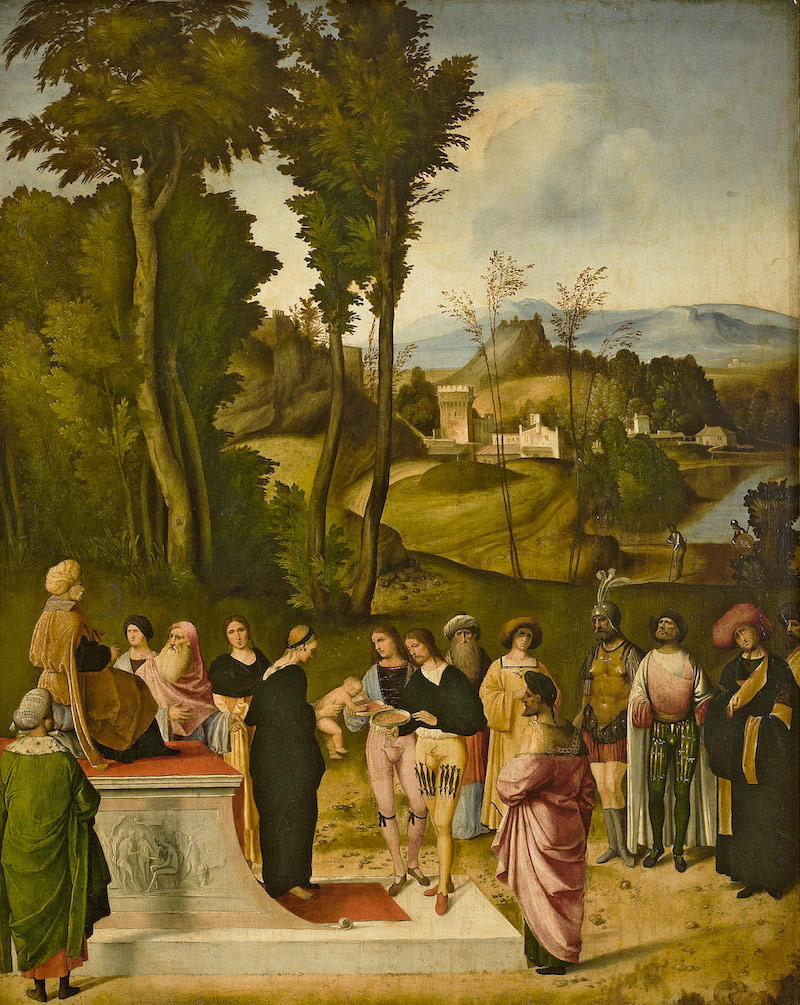
Giorgione: The Trial of Moses
Pharaoh, sitting on his high throne, orders two baskets to be brought to the infant Moses - one containing gold coins, the other containing still-burning embers. This was a test for Moses, who had recently offended the king by stepping on his crown. According to legend, Moses chose the embers instead of the gold coins, which burned his mouth and convinced the king that he meant no offense. The theme is meant to contrast the cruelty of Pharaoh's judgment with the mercy and correct administration of justice.
This painting is one of the few works that have been authenticated as Giorgione's. He brought innovation to Venetian art and was an important painter during the Italian Renaissance, known as the founder of landscape painting. While placing the people in the painting in a natural environment, Giorgione studied how to use natural landscapes under different lights to reflect the emotions and overall atmosphere of the characters. The painter was very sensitive to color and good at using it, and knew how to reflect the changes in tones within a limited range of hues.
The Baptism of Christ
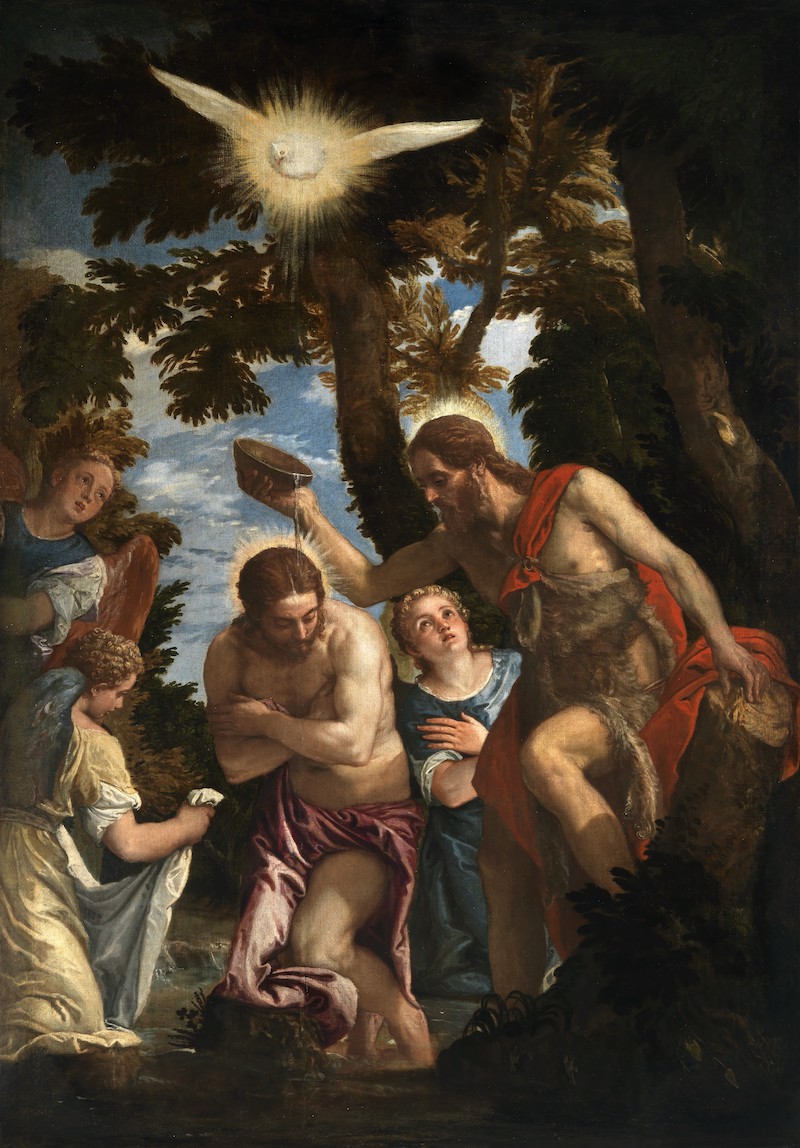
Paolo Veronese, The Baptism of Christ
The story of Christ's baptism is recorded in the Gospels of Mark (1:9-11), Matthew (3:13-17) and Luke (3:21-22). The Gospel of John records what John the Baptist saw, that he personally witnessed the Holy Spirit descending upon Christ, but does not mention that he was baptized. Veronese was a leading figure in the 16th-century Venetian school of painting, as famous as Titian and Tintoretto. He interpreted this theme based on the records in the canonical gospels. In the painting, Jesus receives the sacrament in an open space near the Jordan River in Palestine, and John the Baptist pours water on his head accompanied by three angels. Veronese placed the dove of the Holy Spirit, John the Baptist's bowl and Christ's head on the same axis, suggesting the doctrine of the Trinity. The painter also created other works on the theme of the Baptism of Christ, which are now in the collections of the Duke Anton Ulrich Gallery in Brunswick and the North Carolina Museum of Art in Raleigh. This painting was purchased by Grand Duke Ferdinando II de' Medici of Tuscany in Ancona in 1667, displayed in the Uffizi Gallery, and included in the collection of Prince Ferdinando at the Pitti Palace in 1699. The figures in the painting are all tilted, forming a strange composition. Veronese captured the most extraordinary and almost miraculous moment of this story with gorgeous and light brushstrokes like foam.
The Virgin and Child with John the Baptist, Saint Louis of Toulouse and the Two Patrons

Paolo Veronese, The Virgin and Child with John the Baptist, Saint Louis of Toulouse and the Two Patrons
Veronese was one of the few Renaissance painters with the ability to create drama. Whether in mythology, religion or decorative painting, he was able to create a vivid stage full of dramatic characters and performance effects. This quality made him a popular altarpiece painter for churches in Venice and the wider region.
This work is a reduced version of an altarpiece that Veronese painted for the church of San Fermo in his hometown of Verona, one of Venice’s most important possessions in mainland Italy. Although this painting is an early work of Veronese, it already reveals his amazing talent for fusing the disparate elements of devotional imagery into a single story: the Madonna and Child appear above the table, and the saints step forward to worship and intercede for the two patrons who pray at the bottom of the picture, forming a dialogue between mortals and gods.
Judith
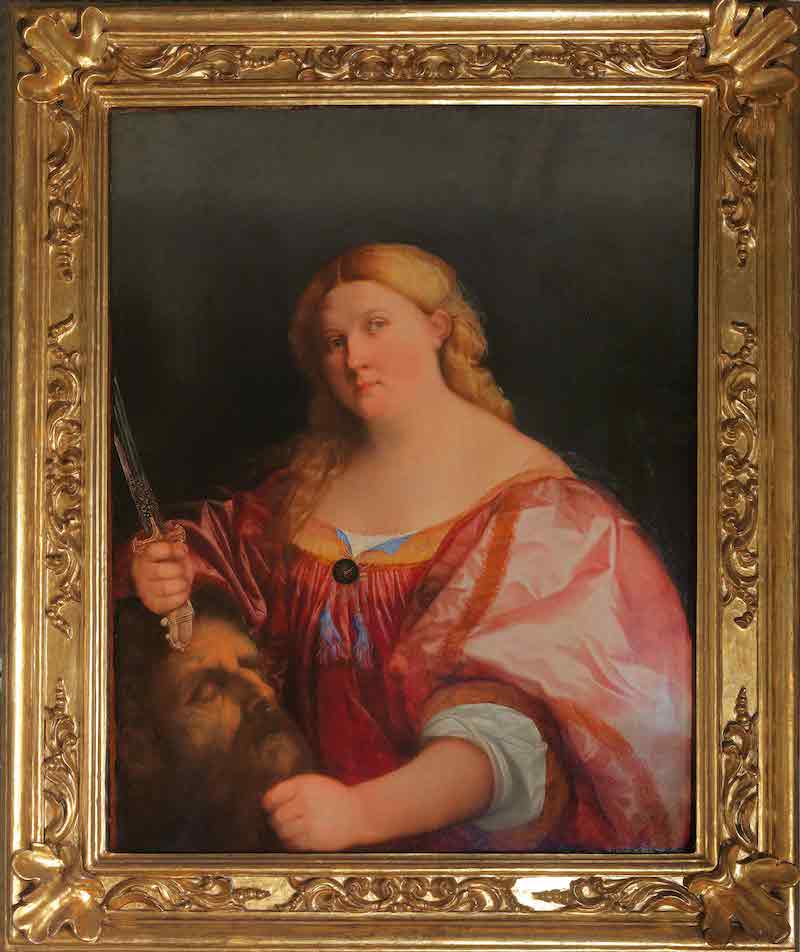
Jacopo Antonio Negredi, also known as Judith Palma the Elder
In this painting, a wealthy young woman in elegant clothes holds a dagger and the head of a rough-looking man. She is the biblical heroine Judith, who cut off the head of Holofernes, the enemy leader, to encourage her compatriots. Judith has a ruddy complexion and golden hair. Her neat and elegant appearance is in sharp contrast to the rude and bestial Holofernes, whose face is full of wrinkles, hair is long, and he has a long black beard. The painter used the biblical story to depict a wealthy and luxurious woman. He carefully painted the details of the woman's clothes, so realistic that the audience seems to hear the rustling of the fabric. The prototype of this theme may be a work like Titian's "Flora", but the old Palma's interpretation is more peaceful and tranquil. The heroine Judith in his painting is proud of her value and beauty.
The painting was donated to the Uffizi in the 17th century by Vittoria della Rovere, a descendant of the Lords of Urbino and wife of Ferdinando II de' Medici, Grand Duke of Tuscany.
Saint Jerome in the Desert
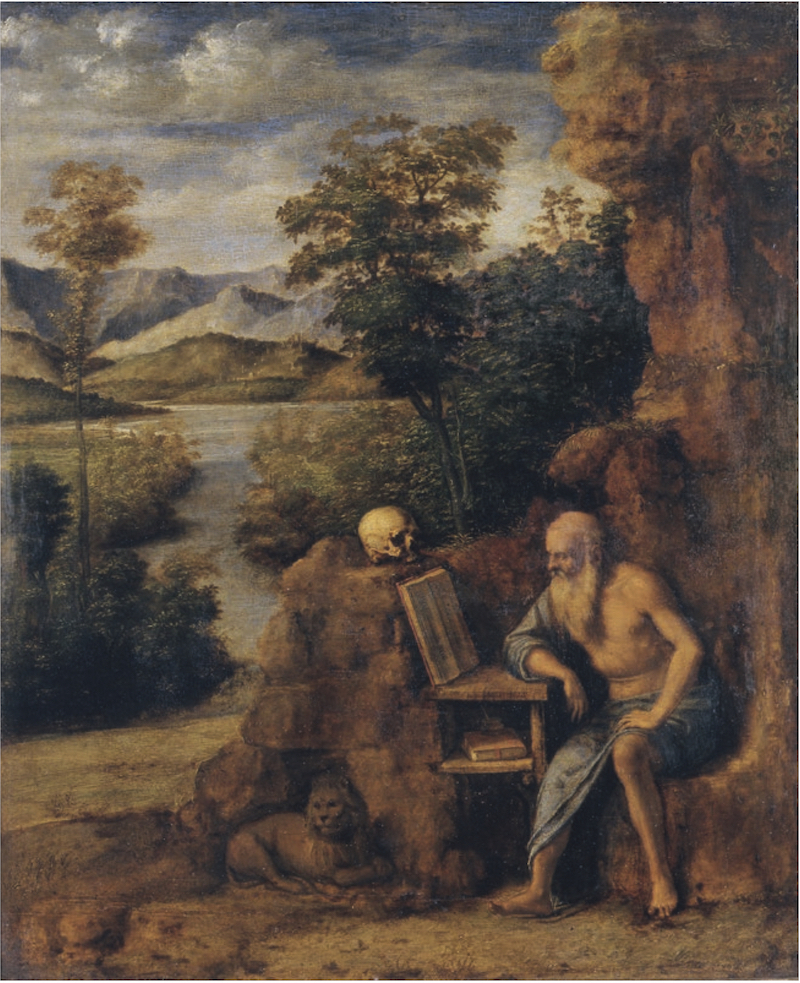
Cima da Conegliano: Saint Jerome in the Desert
Jerome is a fourth-century Christian saint who appears in the painting as a penitent ascetic monk, studying religious texts in a study carved out of a rock wall, with a skull in front of him reminding him to reflect on the transience of life and worldly things. In the foreground, a lion is resting quietly, and after Jerome removed the thorn from its paw, it became his faithful companion.
The wild, lonely landscape in which Jerome finds himself is also an important element of the painting, depicted with great detail - a characteristic of the Venetian school of the late 15th century. The small size of the painting suggests that it was a private commission. This contemplative religious painting is suitable for personal devotions. The painting was painted by Cima da Corneliano, a highly regarded painter who promoted and disseminated Giovanni Bellini's style and practice in the Veneto region.
The Farmer's Family (Parable of the Sower)
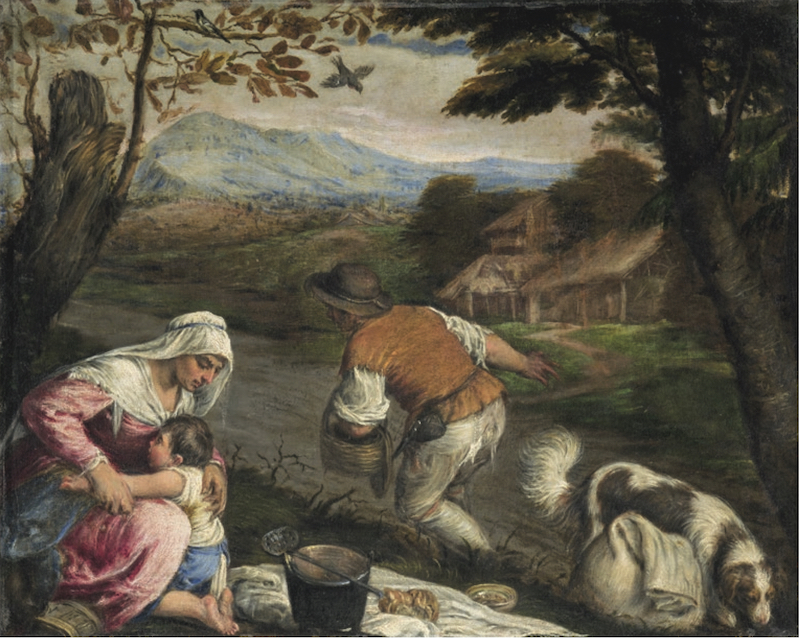
Jacopo Bassano: The Farmer's Family (Parable of the Sower)
This painting depicts the daily life of a peasant family dressed in 16th-century clothing: the father sows seeds in the field, the mother takes care of the children, and the dog sniffs the ground for food remnants. The tranquil field is gradually covered with the setting sun, heralding the end of the day. This scene has a second meaning, which is related to the preacher's preaching and sowing seeds, which is particularly important for Christians because it suggests the spread of Christ's message and his church. Bassano presents the religious story as a real, simple everyday story, thanks to his unique way of painting, which is so effective that we can almost breathe the country air. The brushstrokes are light and soft, and the painting is so vivid that we can perceive the texture of the grass, the fur of the dog and the fabric of the peasant's clothes. Jacopo Bassano and his son's excellent skills in depicting nature and daily life brought them great fame and a large number of orders. They painted small paintings suitable for decorating homes.
[Note: This article is compiled based on the Dongyi Art Museum exhibition catalogue "Titian Flora - Uffizi Gallery Venice School Collection", and the copyright of the pictures and texts belongs to the original author]
The exhibition "Titian Flora: Treasures from the Uffizi Gallery's Venetian School Collection" will be on display from March 29 to July 28, 2024.

